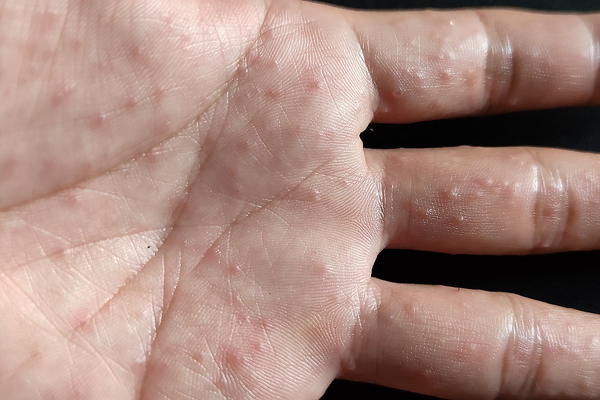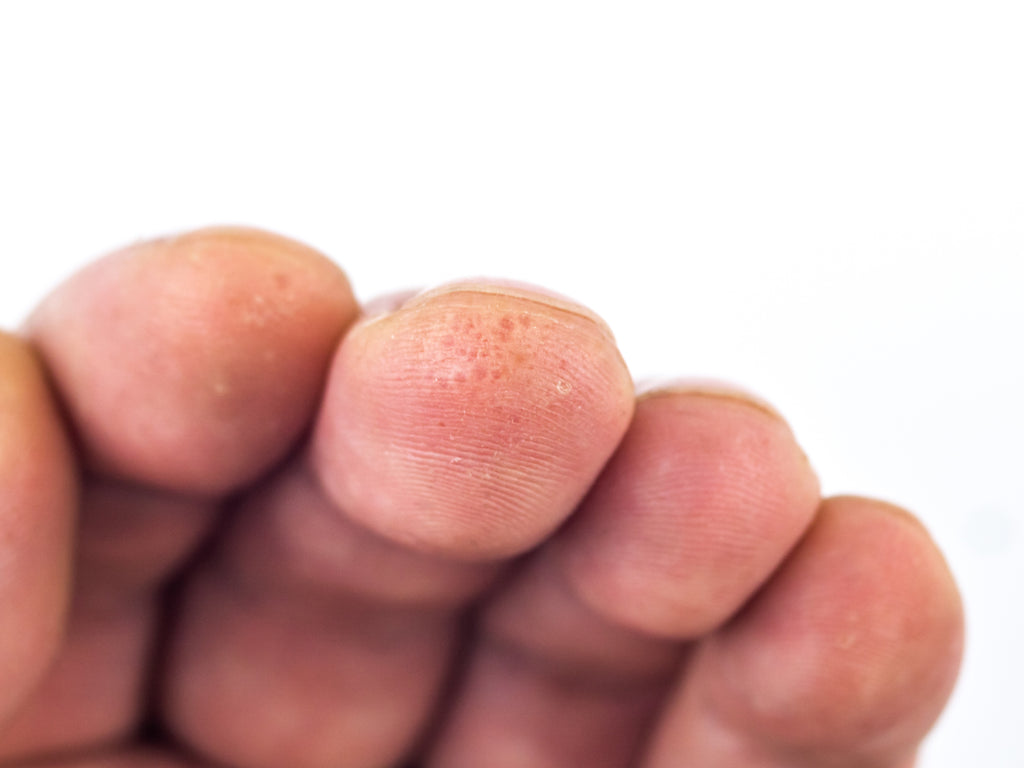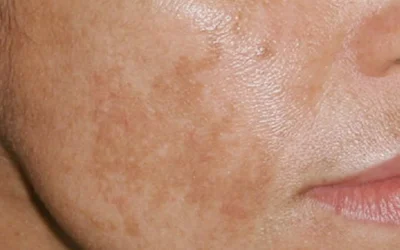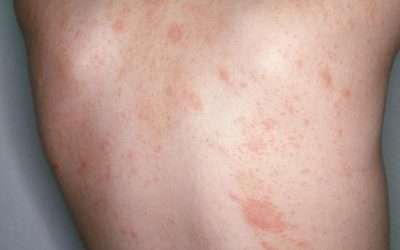Dishidrotic eczema

Dishidrotic eczema (syn. dishidrotic dermatitis, dishidrotic dermatitis, pompholyx) is a chronic, non-contagious inflammation of the skin affecting the hands and feet. The disease is more common in women and in patients with atopic dermatitis or contact allergies.
Clinical signs:
-
- characterised by an itchy rash with small subcutaneous vesicles
- a burning sensation may be felt at the site of the rash
- lesions on the skin of the hands, fingers, soles of the feet
- superficial wounds, skin fraying during healing
- the disease tends to recur


Risk factors:
-
- genetic predisposition
- increased sweating of the hands and feet
- humid environment, frequent contact with chemicals (e.g. hand washing, washing dishes or floors)
- sensitisation or allergy to environmental factors, most commonly nickel
- reaction to medicines
- emotional stress
Diagnostics
Diagnosis is based on characteristic clinical signs. If there is a suspicion that the rashes may be provoked by environmental substances or allergies, an allergen patch test is carried out and a doctor consultation with an allergist/clinical immunologist may be recommended.
If the diagnosis is in doubt, a biopsy of a skin graft may be performed.
Treatment
-
- Avoidance of factors that provoke rashes is recommended (humid environment, allergic substances if found)
- your doctor will assess the extent of the disease and choose topical preparations or a combination of oral medicines.
- phototherapy treatments may be prescribed
Prophylaxis to prevent recurrence of rashes:
-
- wearing cotton gloves and rubber gloves when working with wet hands
- reducing profuse sweating (proper choice of footwear made of natural materials, cotton socks, antiperspirants, botulinum injections, etc.)
- hand and foot creams to ensure good skin barrier properties

Vitiligo – Why Do White Patches Appear on the Skin and How to Treat Them?
Vitiligo is a non-contagious skin condition characterized by white patches due to the loss of pigment. While it does not pose a direct threat to physical health, it can have a significant psychological impact. Learn what causes vitiligo, its symptoms, how it is diagnosed, and which treatment methods are currently available.
Hyperpigmentation: Causes, Types, and Modern Treatment Options
Hyperpigmentation is a common skin condition characterized by dark spots that appear due to sun exposure, hormonal changes, or skin damage. In this article, you will learn about the main types and causes of hyperpigmentation, as well as how to effectively treat it using modern dermatological methods and preventive care.
Pityriasis rosea
An acute, self-limiting, exanthematic skin disease that manifests as itchy, somewhat inflammatory, scaly rashes, usually on the torso, chest, and upper limbs.
iDerma
MB iDerma
Fabijoniškės g. 99, Vilnius
+370 671 33323
info@iderma.lt



